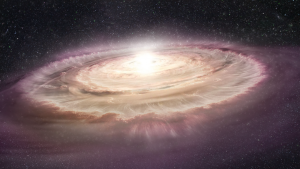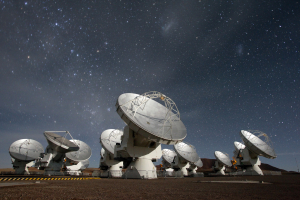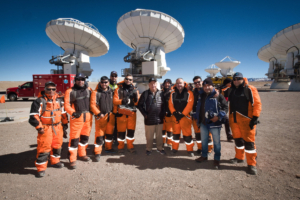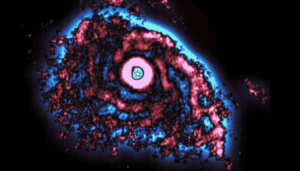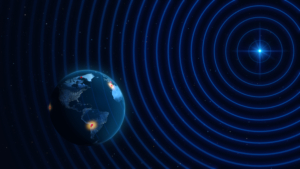New observations from the Atacama Large Millimeter/submillimeter Array (ALMA) suggest that planet formation can occur even in harsh stellar…
ALMA Observes More Than Ever Before
The Atacama Large Millimeter/submillimeter Array (ALMA) is thrilled to announce that a record-breaking total of 4,250 hours of science-quality…
ALMA’s New Observing Cycle Kicks Off October 1st
The Atacama Large Millimeter/submillimeter Array (ALMA) new observation cycle –Cycle 11- kicks off on October 1, 2024, starting a…
United Nations Secretary-General Visits ALMA
The Atacama Large Millimeter/submillimeter Array (ALMA), one of the largest and most sensitive telescopes of its kind in the…
ALMA Detects Hallmark “Wiggle” of Gravitational Instability in Planet-Forming Disk
Traditionally, planet formation has been described as a “bottom-up” process, as dust grains gradually collect into bigger conglomerations over…
Astronomers Make Highest-Resolution Observations Ever from Earth
The Event Horizon Telescope (EHT) Collaboration has conducted test observations with the highest resolution ever obtained from the surface…






